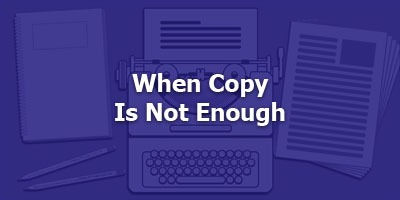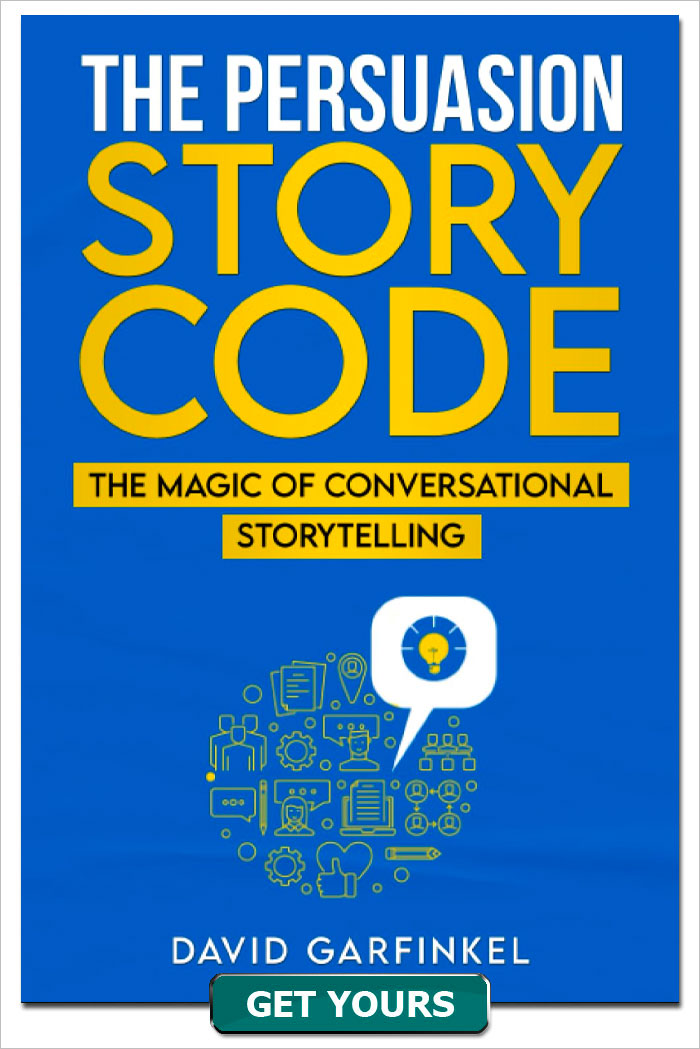Episode 018 - When Copy Is Not Enough
Published by: David Garfinkel on 08-20-2017
Tweet
Sometimes you'll make more sales when copy is only PART of the picture. This episode is how copy "plays well with others."
If you've ever bought a direct mail list, you can get a typical compiled list for as little as 10 cents to 25 cents a name. Sometimes for even less than that. A compiled direct mail list is usually put together from publicly available records. It doesn't tell you anything about the desires or behaviors of the people on the list.
For that, you might want a response list. For example, magazine subscribers. Seminar attendees. Product purchasers. Response lists are made up of people who have demonstrated their desires through behavior. That is, they have bought something. And buying is a behavior that shows a desire.
The people who sell these lists know that the names are a lot valuable. And so, with a response list, the price can climb steeply. You might pay $1 a name… $5 a name… even $10 a name.
But then there's a still higher level of pricing, and that's where you buy qualified leads for prospects who are interested in making high-dollar purchases.
For example, here's an interesting fact: 85% of all new salespeople in the insurance industry wash out within two years. It's not necessarily that they're all such terrible salespeople, or even that they all hate selling insurance. It's that it's so hard for most of them to keep getting enough qualified leads to stay profitable.
The people who sell qualified insurance leads know this, and you can pay astronomical prices for highly qualified insurance leads from mailing list brokers and lead brokers. Remember we started at 10 cents a name with compiled lists. Insurance leads can run as much as $60 apiece… which is 600 times more than 10 cents! Maybe even more, depending on how qualified the lead is.
Why? Because in the right hands, a $60 insurance lead has the potential to create a four-, five- or six-figure commission for the insurance agent. And in very rare cases, a skilled and lucky life insurance agent can make over one million dollars in commissions for selling just one policy to a lead like that!
Now, what does all of this have to do with copy? Am I suggesting copywriters go into the business of writing copy that produces highly qualified insurance leads? It's not a bad idea if you can figure out how to do it, but that's not what this episode of the Copywriters Podcast is about.
I tell this story – from 10 cents to $60 a name – to make this point: In an insurance sale like I described, the million-dollar commission does not come solely from copy, but the very expensive name is one part of the traditional direct marketing process.
And if you use copy to solve a big sales and marketing problem – which may be only one part of the larger sales process, and could be something other than getting qualified leads – you can really boost the bottom line of a business, or, if you negotiate a good deal, make a lot of money for yourself.
So, here's the point: You don't always need to use copy to close the entire sale. A lot of people think that's the only way to use copy when you're using copy to sell, but it's not. Today we're going to explore some of the other ways copy helps you get more business, when it's only part of the process.
But first, here's some copy many listeners have grown to know and love:
Copy is powerful. You're responsible for how you use what you hear on this podcast. Most of the time, common sense is all you need. But if you make extreme claims… and/or if you're writing copy for offers in highly regulated industries like health, finance, and business opportunity… you may want to get a legal review after you write and before you start using your copy. My larger clients do this all the time.
Let's start with what copy is good for and typically used for- small price product sale: book, gadget, everything under the sun (Amazon), tickets (stubhub), stuff in your garage that you would like to trade for cash (eBay, the owner of stubhub)- that's a "one step sale," which in the sales world is called a "one call close"
- this episode was inspired by a long and spirited thread on Facebook, where I asked about closing high-end sales with copy. Some people adamantly insisted that if the copy was good enough, that was all you needed. I'm not sure how much actual experience they had, though. Most people said copy was part of high end sales, and that live conversations were used after copy generated qualified leads
- to be sure, there are people like Frank Kern and Dan Kennedy who can fill $10K seminars with copy alone, and have done so more than once. And there are publications like Forbes and Bloomberg Businessweek that fill high-end conferences and cruises the same way. So it's not impossible. But I would say it's the exception more than the rule.
When copy makes more sense as part of the sale
- My $5000 Breakthrough Copywriting Seminar in Las Vegas. We had to talk to almost every person after they had read the sales letter. In the FB post, a lot of people reported similar experiences. Since the hardest part of marketing a high-end event is often generating a hot lead, this is a very workable situation.
- Where people have to see what they're buying. You can use copy to generate leads for residential real estate. I'm sure it's possible in some cases to close the sale with pictures and sight unseen (in person), but usually a homebuyer wants to walk through the house and see the neighborhood before they buy.
- With a personal service like coaching. Only mentoring one client in recent memory signed up without talking to me, and that was because of a referral from a very trusted source. Generally they want to talk with me first, after they've been to my website and filled out the application form. And I want to talk to them, too. There's some personal chemistry that's necessary to make that kind of service work.
- With something like a job application. You don't usually want to hire someone just because of a résumé, which can be seen, and used as, a form of copy. You want to talk to them first. Nor do you usually want to accept a job without talking to the employer, even though with good copy an employer can "close the sale" and make someone want to apply and work for a company. People need to talk to each other most of the time in a situation like that.
How to look at copy differently
- Copy is leverage. The old phrase is "salesmanship multiplied." That can be insulting to women and in some businesses, women do a better job selling than men do, so it can also be an inaccurate phrase. Now if you look at copy as a sales presentation multiplied, the idea is this: You can do more, more quickly, more effectively, and at a lower cost per sale, with copy, in many cases.
- So let's take the whole sales process for one product or one service and break the sales process down into connected pieces. 1) There's lead generation. 2) There's building trust and conviction. 3) There's closing the sale. 4) There's dealing with buyer's remorse. 5) There's getting referrals. 6) There's getting repeat business. And 7) in continuity, there's keeping your customer month after month.
- You can use copy for any one of those seven pieces of the complete sales process. Or more than one piece, without using copy for every piece of the complete sales process.
- A lot of it depends on where testing and experience shows you need human interaction.
Two examples with my clients
1) Abacus. All I did with my $40 million letter was generate leads. But that was all they needed. They were brilliant at everything else. But they were at their wit's end trying to generate leads.
2) MLM training company. They did the launch. That wasn't too hard. They hired me to do the back end, an expensive mentoring program. Letter took a long time. Over $1 million in sales in a couple days. If the server hadn't melted down, it would have been more.
Advice
If you can sell it all with copy – do it!
If you need human interaction, test and tweak to figure out what pieces of the complete sales process need human interaction, and which pieces can be leveraged and scaled up with copy.
Keywords: advanced marketing copywriting lead generation closing confirming referrals continuity









